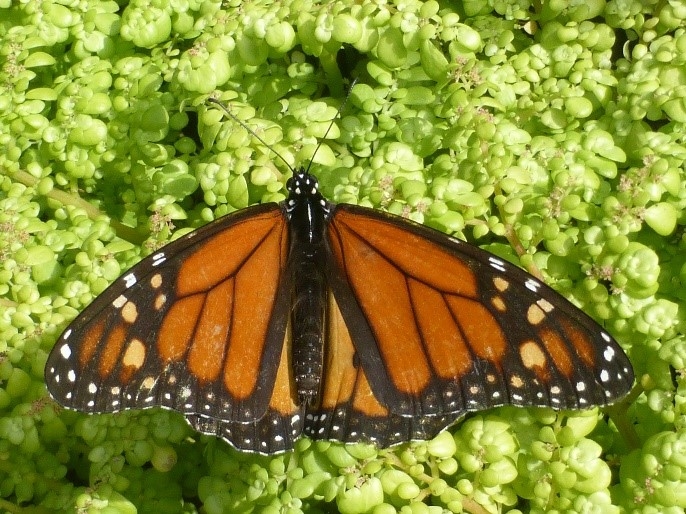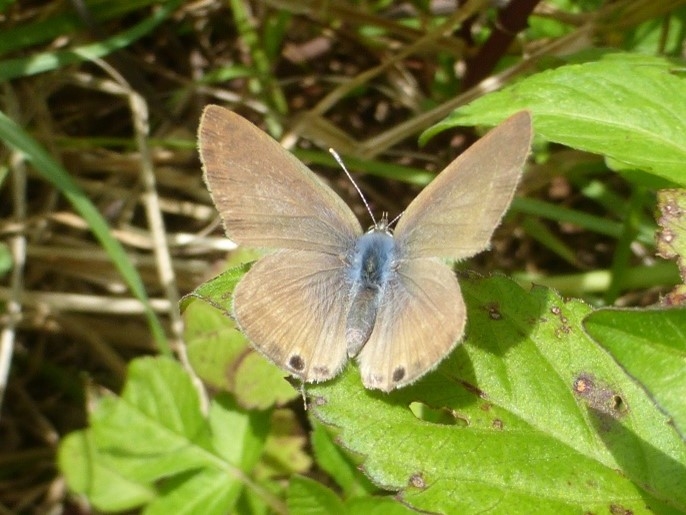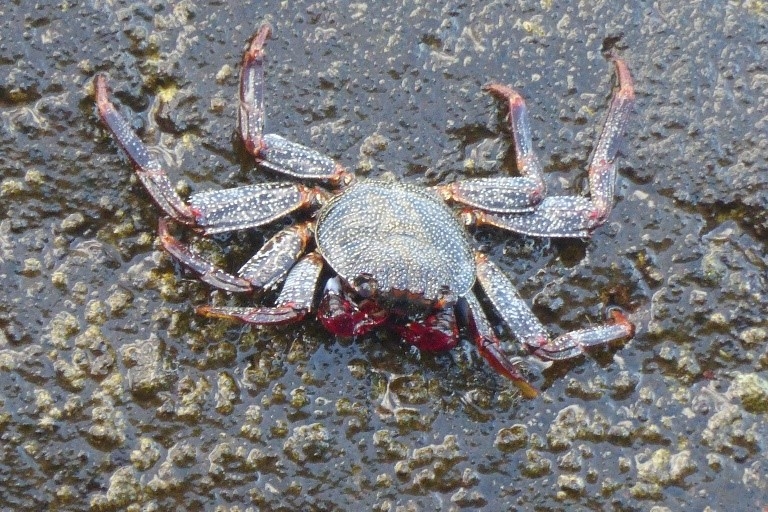This month has been a little different for me. I finally sampled some winter sunshine. That’s right, the homeboy made it to foreign lands and for a whole week my tried-and-trusted bearings were all awry. My nature compass simply couldn’t find it’s standard fix. Birds, butterflies, insects and plants became aliens. Forms were familiar, but behaviours were out of character. I had to work hard for every morsel. We were on the island of Madeira for a week, and I apologise at the outset if this report sounds a little like “From Our Correspondent”.
Let’s begin with the easy; butterflies.

This is the rather stunning Monarch. Bigger than any that we have here, and so used to floating and gliding that they create a vision of a delicate kite just hanging in the breeze. I think I was so over-awed that my pictures were all inadequate. Funny, no one else seemed to be so fixated on them as I chased my prize through the busy town centre park. If they were a common sight in my every day, would I be so blasé as they? I can’t believe that I would ever be so.

This is another we don’t see in the UK. This is a Long-Tailed Blue. Look closely and you can see that this one has lost its right-hand tail. Much smaller than the Monarch, more like our own blues, but differing in the black dots, tails and the zig zag pattern of the underside. Easy to overlook but once I got my eye in I could see them where ever we went – even in town. I spotted three other species of butterfly, a white of some description – they have the same large and small as the UK, my first clouded yellow and a little puzzler, which I only to got to grips with after our return. The clouded yellow was very mobile; I chased but no photo. We do get them each year, particularly in the south, as they migrate across the channel. Easy to identify, even at pace. I need more of the clouded yellow. And the puzzler? Up in the forests we spotted a medium sized orange with a brown overlay. It rested long enough to look, but not to photograph. My instinct was a fritillary, but it wasn’t big enough for the Queen of Spain, and the brown overlay was simply too full.
And that brings me onto the birds. I have no pictures here, but bear with me. Two birds that are very familiar to me were present, but they both drew from me far more observational time than they would demand here in the UK. The first, flitted about in the vegetation on the edge of our balcony. There were several. They were scolding just like they do when you are too close the nest of a blackcap. Closer observation revealed that’s exactly what they were. Normally I would expect to see at most, one male and one female, never more. Here were several of both. They surely have passed their breeding season by November, and most of their “talk” was scolding. There were hints of song, but not the same song of the breeding male heard here in spring. It was fascinating to watch such a familiar species exhibiting such different behaviour.
And there, drifting so gently on the thermals above the town were Kestrels. My instinct again was to look for a new species. After several days I came to the reluctant conclusion that in fact they were the same as our own, but in a city? In such numbers? Only once did I see one hovering. Once, I saw a single bird perching low and gliding across a narrow street to take something off the wall, maybe a lizard. Am I getting my eye in with the birds too? By this time, I had reasonably confidently identified some Serin in the tree-tops, but as the week progressed I came to see some of the characteristics of the Canary. Not the bright yellow cage bird we breed and exhibit, but the natural origins of those highly un-natural specimens.
We spotted two other species. Many Madeiran Firecrests in the botanical gardens. Again, so many of them, and quite different to our own. Easily identifiable, and not nearly so subtle. Lastly, as we walked one of the laverdas, away from the urban environment and surrounded by trees, wondering why there were so few birds, we had a very brief sighting of what I am convinced was a Blue Chaffinch. It made no sound. It looked at me through the ring about its eye and was gone, leaving us with only the images of lighter patches of plumage lingering in our minds.

Down to the sea. This unusual crab was plentiful. However, just as unusual was the fact that they seemed to prefer being out of the water, browsing on the algae growing on the rocks. The crimson frills around the mouth parts were very striking. I have no idea what species they are and had no time to check, but there were so many other nature spots to keep me occupied. I was left with a lingering impression of very familiar species behaving in unfamiliar ways but when I think further on the subject it shouldn’t surprise me. After all the humans also demonstrated a behaviour pattern long developed within a different environment, why should the other forms of nature be any different?
We arrived home in the cold, dark and wet, but next morning the whole world we had left behind had changed. The autumn colours had developed during the week away. Even without the sun, our garden was brighter than the brightest of days away. Each tree species is now fully exhibiting its own particular hues. Which is your favourite? The dull, monochrome golden oak, the pale greens of the ash, the dry and rusty chestnut, the crimson shades of maples, the fluttering gold of birch, the long, red-through-yellow of the cherry? My own favourite is the multi-coloured beech. A beech hedge is a thing to behold, but if you can stand a distance from a fully-grown beech tree and take it all in, you will know exactly what I mean. One of my favourites lives in the bottom car park at Beacon Hill.
Thanks for reading!
Chiff Chaff


